Camera Comparison: Samsung Galaxy S4 Zoom vs Galaxy S4, HTC One, iPhone 5
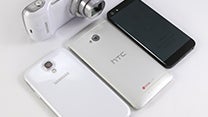
You can now read:
- LG G2 vs Samsung Galaxy S4 vs iPhone 5 vs HTC One Camera comparison
- iPhone 5s vs LG G2 vs Samsung Galaxy Note 3 vs Galaxy S4 vs HTC One vs Motorola Moto X vs DROID Ultra Camera comparison
- Google Nexus 5 vs iPhone 5s vs Sony Xperia Z1 vs Samsung Galaxy Note 3 vs Galaxy S4 vs LG G2 vs Nokia Lumia 1020 vs HTC One Camera comparison
Is it a smartphone? Is it a camera? Actually, it is an amalgamation of both, and it is known as the Samsung Galaxy S4 Zoom. This peculiar device has the guts of a modern-day smartphone, and as a matter of fact, it packs enough punch to be anyone's daily driver. But at the same time, it also offers camera features rarely seen on something that can make phone calls – 10x optical zoom, optical image stabilization, xenon flash, and tons of manual camera adjustments are all in its arsenal.
To keep things fair, all photos you're about to see have been snapped on automatic settings, unless noted otherwise. In other words, no special shooting modes or scenes have been applied in order to let each camera decide for itself what settings it should use, depending on the scene being captured. All pictures have been taken using nothing but a pair of steady hands, with the exception of indoor photos, for which we used a tripod.
Overall Presentation:
So without any further ado, let's take a look at what these four smartphones are capable of. Here we have a handful of photos that we took with them in a variety of lighting conditions. All images have been scaled down to a resolution of about 2.7MP (with a width of 1920px) as that size should suit the majority of consumers' needs. The goal of this is to present the photographs from a typical user'’s point of view. That'’s how the average Joe would view and use them – posted on a social network or a photo sharing web site, for example. And by the way, a digital photo of this size is perfectly suitable for making 6”” by 4”” hard copies.
As expected, the Samsung Galaxy S4 Zoom produces great results. Its images are very detailed, with well-balanced colors and accurate exposure. Besides, the Zoom handles dynamics really well, which makes its photos more lifelike. But interestingly, the Samsung Galaxy S4 does not lag behind the Galaxy S4 Zoom in terms of image quality at this resolution. In fact, some of the S4's photos pack slightly more detail. Close behind these two is the iPhone 5 with its detailed, but a bit noisy images. The HTC One is an average performer and its images would have looked better if its camera didn't sharpen them as much as it did. Also, it has a hard time capturing bright or white objects. This can be seen well in its night photos where well-lit areas appear much brighter than they should be. But that aside, the One's photos are still pretty usable.
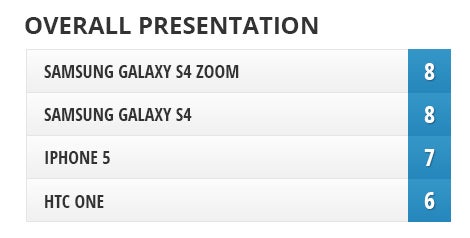
Details:
True beauty hides in the details – whoever coined this quote was surely onto something. And yes, we must agree that it is nice when you zoom in on a photo in order to take a clearer, closer look, or when you have the freedom of cropping the image as you please. With its 16MP camera sensor, the Samsung Galaxy S4 Zoom seems like a potential winner in this category, but in reality, the Samsung Galaxy S4 beats it by a hair despite having three megapixels less to work with. The S4's photos are slightly more detailed in nearly all scenes and have less digital noise, which is surprising given the fact that the S4 Zoom is equipped with a physically larger sensor.
The iPhone 5 is, as always, capable of snapping very detailed photos that look nice even when viewed at their full size. Judging by the photo samples below we can't say that the Samsung Galaxy S4 Zoom captures any more detail than the iPhone 5, which is why these two devices share second place. As for the HTC One, having just four megapixels of resolution holds its back from being as potent as the other three handsets. Its photos look okay, of course, but they just aren't as detailed and are sharper than they should be.
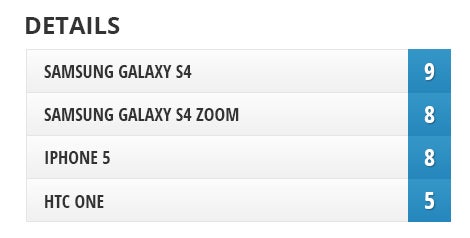
Color representation:
Colors – the way they are captured can either make or break a photo. Thankfully, none of the smartphones we're comparing can be regarded as disappointing in that respect. But they all aren't perfect either. The Samsung Galaxy S4 Zoom and the Galaxy S4 perform equally well and the colors in their photos look very close to reality, but there is some extra saturation added in warmer tones. The good thing is that the boost is very slight. The iPhone 5's photos look nice in general, yet color accuracy may vary depending on lighting conditions. Certain shots have an overall warmer tone, making colors look warmer than they are in real life. The HTC One has the most neutral color representation of all smartphones, but can't capture whites in detail.
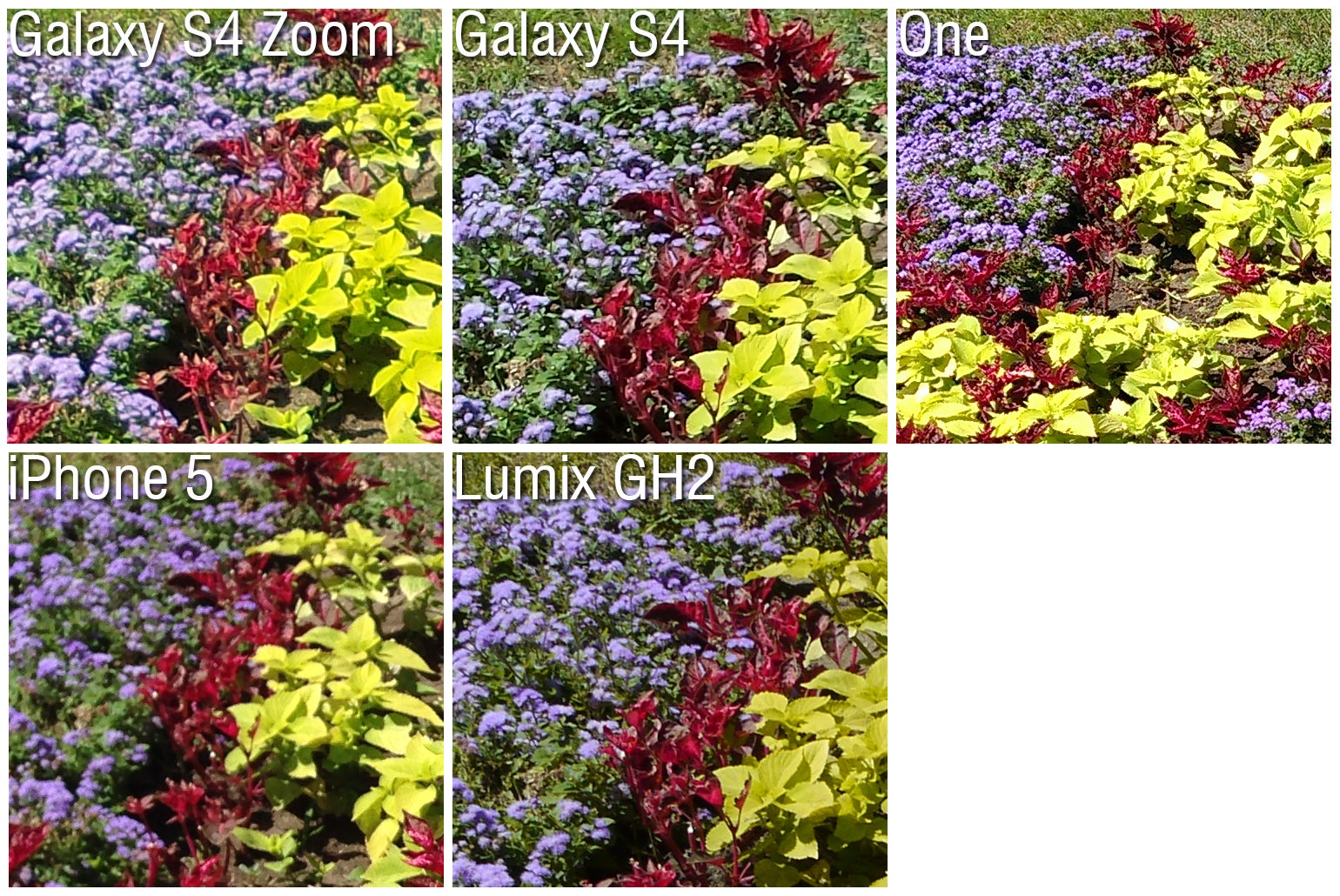
100% crop
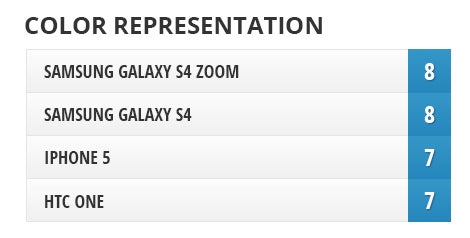
Exposure and dynamics range:
It didn't take us long to conclude that the Samsung Galaxy S4 Zoom does the best job at exposing each scene properly. What's more is that it captures a very wide portion of the dynamics range, which is why its photos are detailed even in shady areas. Close behind it is the Samsung Galaxy S4, which also exposes objects accurately, but can't quite perform as well when there are both bright and dark areas within the frame. The iPhone 5 does deliver satisfactory results as well, but while it excels in some scenes, it leaves something to be desired in others. As for the HTC One, the smartphone often leaves the scene underexposed. Bright backgrounds are given too high of a priority, which often results in the subject present in the frame's center being darker than it should be.
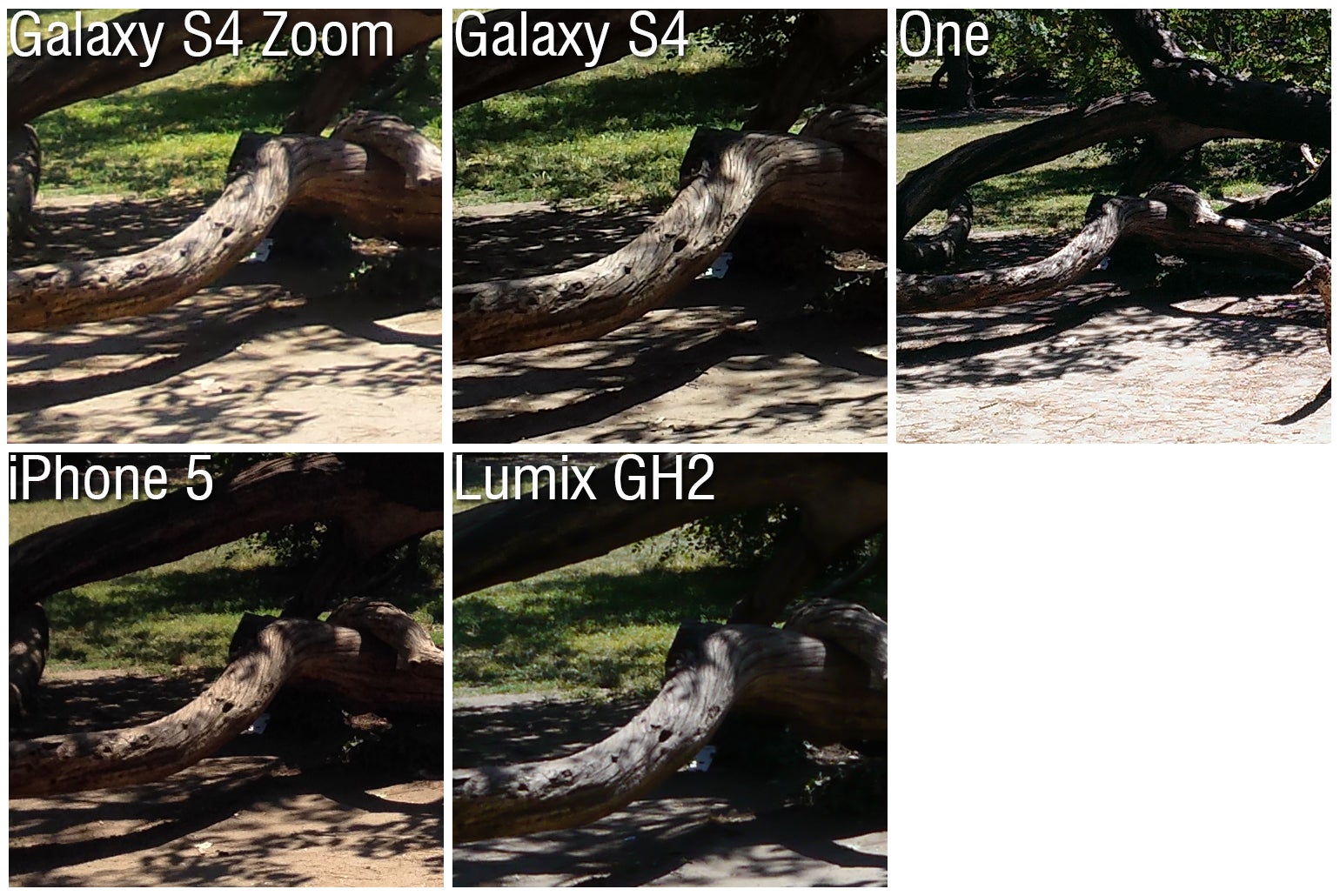
100% crop
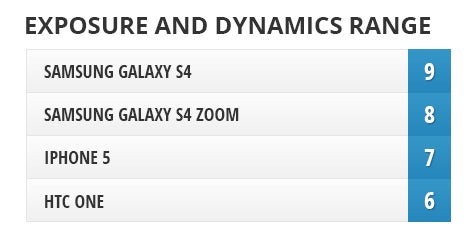
HDR:
All of the smartphones that we're comparing come with built-in HDR (high dynamics range) mode, available at the tap of a button. When used under the right circumstances, this feature allows for better photos to be captured, with more life-like blue skies and detail-rich shady areas. In order for this trick to work, a smartphone's camera takes several images of varying exposure in rapid succession. These are then blended together by the camera's software.
Judging by the HDR photo samples that we took, the Samsung Galaxy S4 Zoom is a step ahead of the rest in this category. That isn't very surprising, actually, since its non-HDR shots taken under the same lighting conditions also look very eye-pleasing. The Samsung Galaxy S4 and the iPhone 5 share the second spot with their HDR photos. Sadly, the HTC One trails far behind. Its HDR photos look weird, to say the least, with bright areas appearing silvery and halos around objects visible in some areas within the frame.
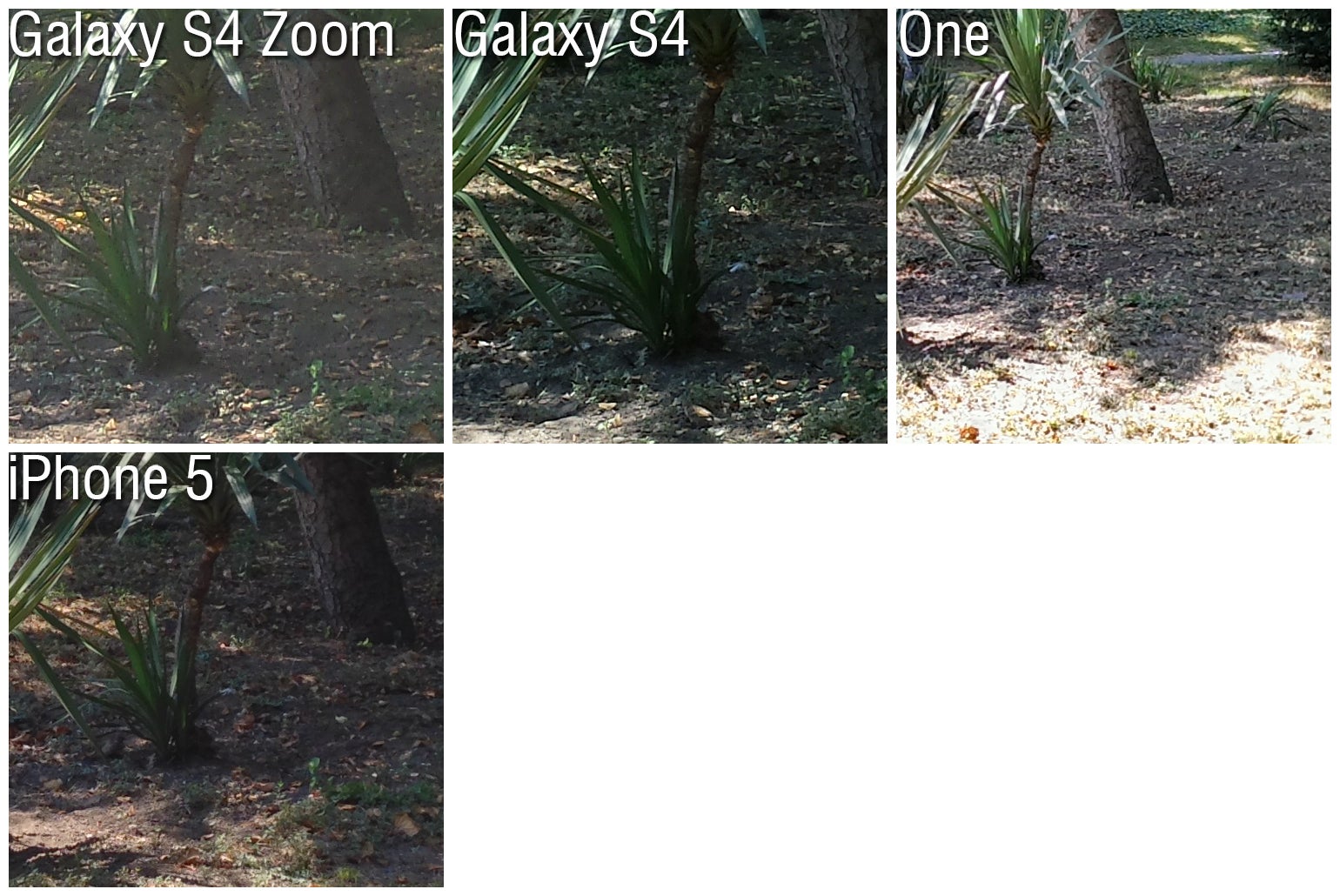
100% crop

Indoor photos:
While all smartphones can take decent photos in broad daylight, indoor photos are a bit trickier for them to snap due to the lack of a strong light source. That, however, shouldn't be a problem for the Samsung Galaxy S4 Zoom as it comes with a built-in xenon flash. This type of flash provides much better illumination as it is brighter than those LED lights found on most other smartphones, including the Galaxy S4, HTC One, and the iPhone 5.
Yet surprisingly, the S4 Zoom's indoor photos aren't as outstanding as we expected them to be. They are indeed the most detailed, with best color accuracy and least amount of digital noise, but could have been much brighter and clearer. While the xenon flash illuminates the middle of the frame, the sides are left out darker than they should be.
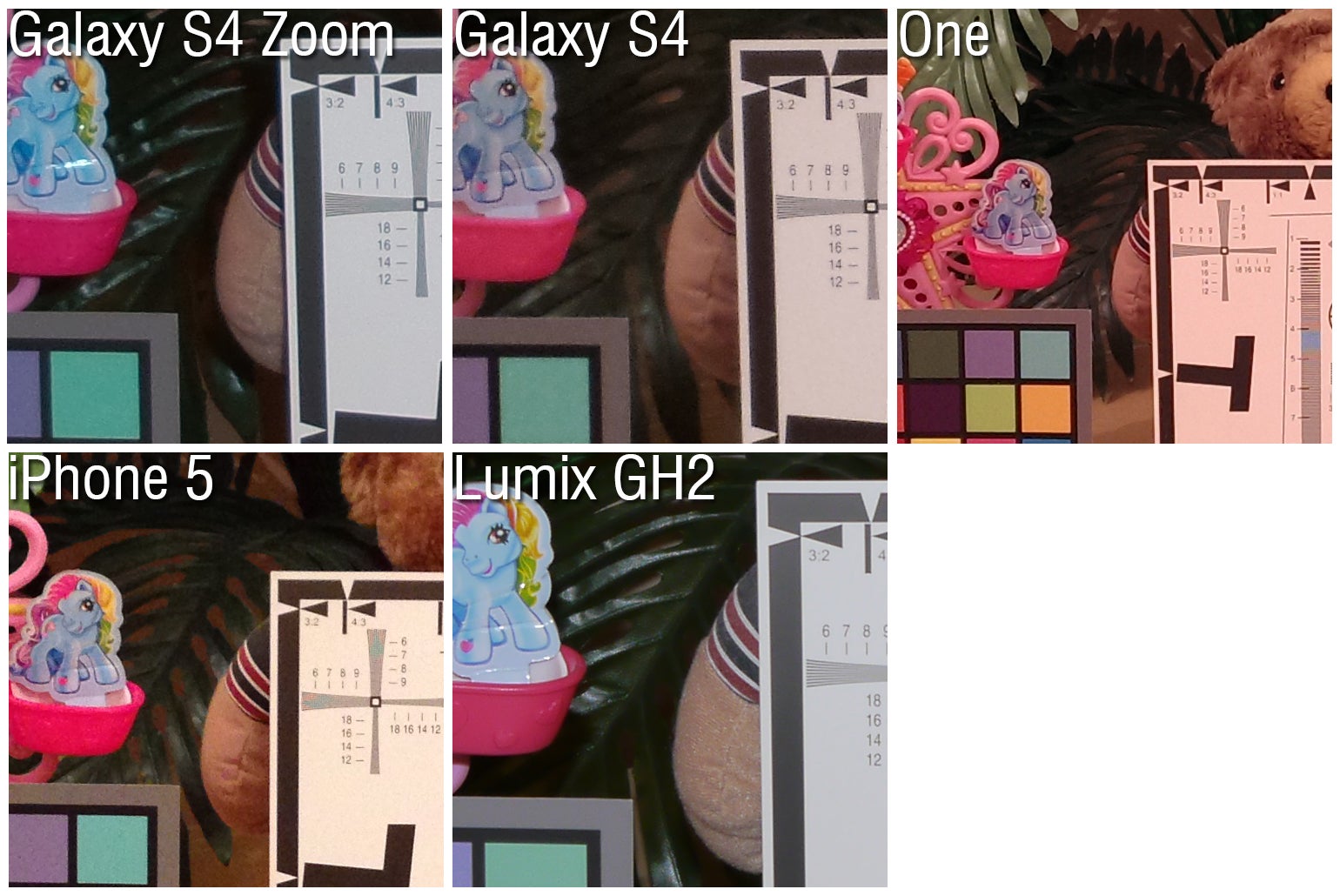
100% crop
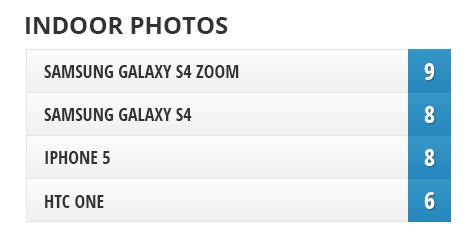
Close-ups:
There's no doubt about it: macro photographs can be very pretty, enhancing all that fine detail we often fail to notice. Another thing we're sure about is that all four smartphones excel in this category, producing great, detailed close-up shots. No matter the circumstances, the Samsung Galaxy S4 Zoom, the Galaxy S4, the HTC One and the iPhone 5 take beautiful macro photos. Only the HTC One could be a bit tricky to use as it sometimes, albeit rarely, fails to focus properly, requiring a tap to focus on the desired object.
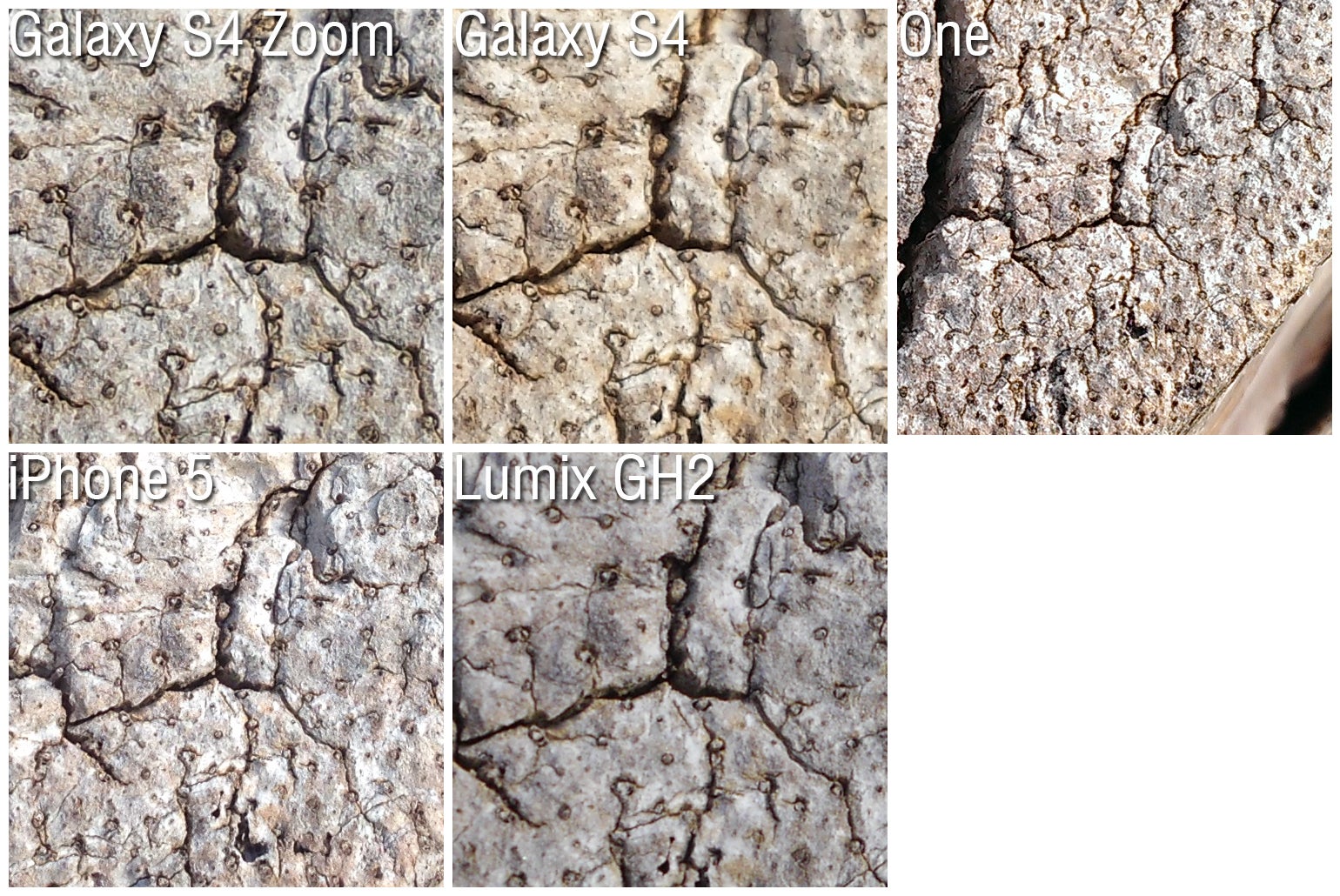
100% crop
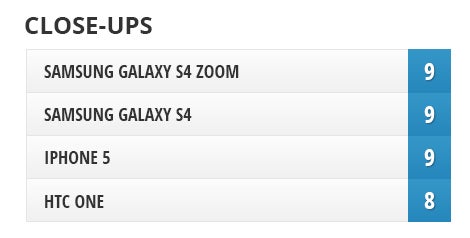
Night photos:
Once again, the Samsung Galaxy S4 Zoom grabs the gold with is great night shots. Its images are not only low in digital noise, rich in details and with eye-pleasing colors, but also free of motion blur caused by shaky hands in nearly all scenes. The smartphone's optical image stabilization deserves credit for that. Using the camera's night mode isn't mandatory, in our opinion, as the resulting photos have less life-like colors, despite being brighter overall.
Both the Samsung Galaxy S4 and the iPhone 5 can take pretty photos at night, but in our opinion, the S4 is slightly ahead, especially when its night mode is enabled. Its images are well exposed, with a tolerable amount of digital noise and good-looking colors. The iPhone 5 night shots are good, but often noisy, as one can easily tell even without zooming in on them.
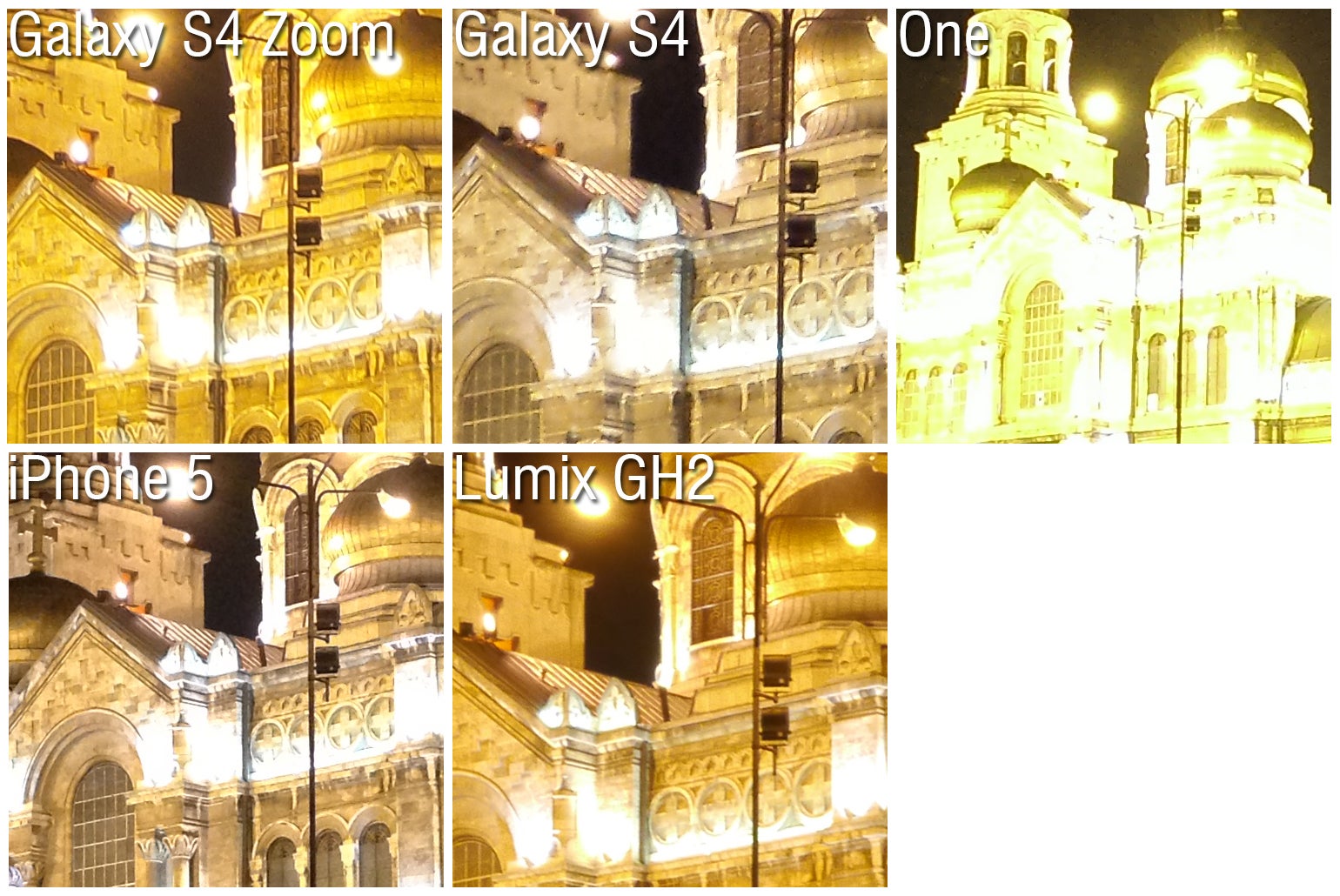
100% crop
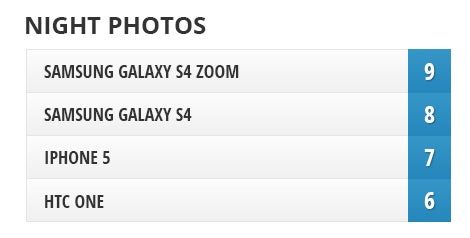
Video:
Taking 1080p video at 30 frames per second is now something every high-end smartphone can do, including the Samsung Galaxy S4 Zoom, the Galaxy S4, the HTC One, and the iPhone 5. And the quality of their video is very high in general, although some of these four devices can do a better job at it than the others.
The Samsung Galaxy S4 Zoom, for example, has excellent image stabilization, above average dynamics range, and very accurate color representation in its videos. Its nighttime footage looks great as well despite the visible traces of digital noise in it. The sound, however, is mediocre at best, with no low frequencies whatsoever.
The HTC One can't impress us with its video quality. Its footage is passable and very well stabilized, but often underexposed and with occasional focusing issues. It gets even worse at night when the HTC One videos are choppy to an unacceptable level. We must admit, however, that the HTC One has the best sound in its videos since its advanced microphones can record low, mid, and high frequencies in detail.
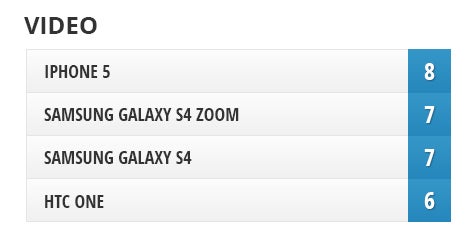
Optical Zoom demonstration:
Having true optical zoom on a smartphone is pretty awesome, especially when it is used in tandem with optical image stabilization. Thanks to these two outstanding features, which are available both while shooting photos and video, the Samsung Galaxy S4 Zoom can bring you much closer to the action and take clear, detailed pictures that no kind of digital zoom would be able to match. The Samsung Galaxy S4, HTC One, and iPhone 5 offer digital zoom only, which usually produces low-quality results. Here's a demonstration of what the Samsung Galaxy S4 Zoom can capture using its 10x optical zoom lens.
Samsung Galaxy S4 Zoom Sample Video with Optical zoom demo:

Camera interface and ease of use:
The camera interface on a smartphone is no less important than the quality of the camera itself. It is often what determines how fast one would be able to snap a photo in situations when timing is of importance. Having a wide array of camera settings to adjust is always an advantage, although a simple, yet intelligent camera app makes sense as well as it would be most suitable for casual users.
When it comes to boot times, the cameras on all four smartphones launch fast and can be triggered straight from their lock screens. Even the Samsung Galaxy S4 Zoom, which has to extend its optics first and then snap a photo, is about as fast as the Galaxy S4, the HTC One, or the iPhone 5.
Ergonomics is also among the factors that must be taken into account. With its thick sides, the Samsung Galaxy S4 Zoom is indeed comfortable to hold, be it in landscape or portrait mode. Thankfully, the software is smart enough to detect when your right thumb is resting on the screen or the capacitive buttons so these won't be activated accidentally by your tap. A standard threaded receptacle is available on the side for mounting the Galaxy S4 Zoom on a tripod. Another advantage that the handset offers is its 2-stage camera shutter key. Something that bothers us, however, is that the right microphone can be easily covered with a finger by accident.
The Samsung Galaxy S4 Zoom camera interface is extremely rich in features (for a smartphone, that is). A total of 26 scene modes are available, including Fireworks, HDR, Night, and Panorama. Some cool features are included as well, such as the Eraser mode, allowing one to take unwanted moving objects out of the frame after it has been captured, Animated Photo, which animates an area of the image selected by the user, and Best Photo, taking multiple image in quick succession, out of which the user can later pick the image they like the most.
The so-called Expert mode on the Samsung Galaxy S4 Zoom is for those who like to adjust all settings manually – a frustrating process when dealing with a touchscreen instead of actual buttons. Sharpness, contrast, saturation, and exposure can be adjusted from here, as well as the aperture size, ranging from F3.1 to F8.8 (F17.8 when at 10x zoom), the shutter speed, and the ISO.
While it won't allow as much freedom when it comes to manual settings adjustment, the camera menu on the Samsung Galaxy S4 is still relatively rich in terms of features. There are lots of scenes and presets to pick from, and shortcuts to various camera settings can be set manually, depending on the user's preferences. The device itself is comfortable to hold while taking photos. There is no camera shutter key present, but the volume button can be set to act as one.
The HTC One has a camera interface that is organized in an awkward manner. All settings are placed in the same list, meaning that sometimes one has to scroll a lot before they get to the adjustment they want to make. Thankfully, the most important settings, such as the scene mode and image resolution, are near the top of the list. A cool feature found on the HTC One is the ability to take 120fps slow-motion video. The handset itself isn't the most comfortable to hold so one must be cautious while shooting with it.
Last but not least, the iPhone 5 is the perfect device for casual users, with its simplistic UI that offers no advanced features, save for the built-in Panorama and HDR modes. However, that isn't necessarily a drawback as the interface is simple enough for anyone to quickly get the hang of it. You just take the smartphone out, point it at the object, and shoot! The camera is smart enough to take care of all the image setting adjustment for you. When it comes to ergonomics, the iPhone 5 is comfortable to hold while snapping photos, and its volume down key can be used as a shutter button.
Conclusion:
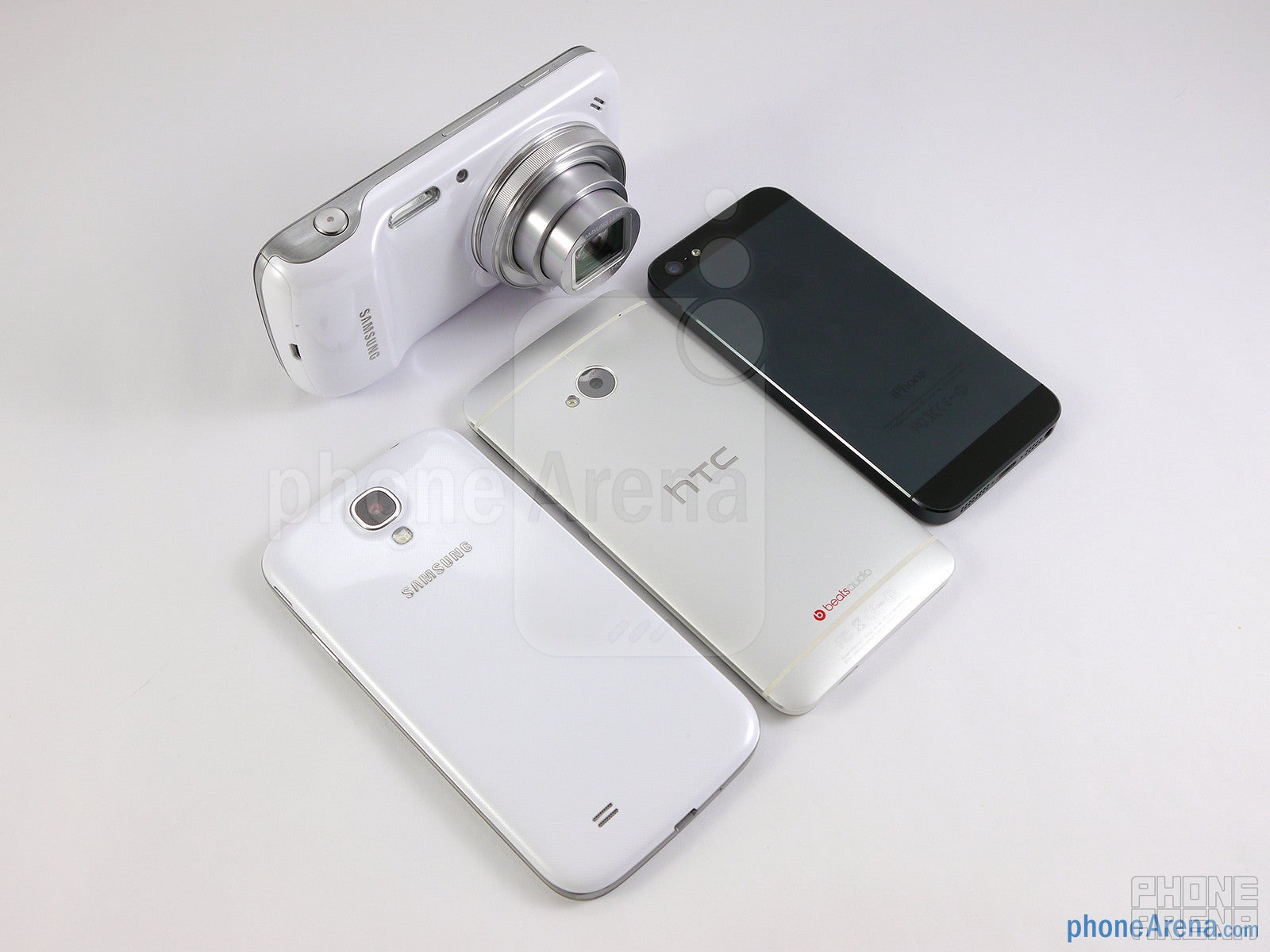
The Samsung Galaxy S4 showed us once again that its among the best cameraphones money can buy. It may lack the zooming and image stabilization capabilities of the S4 Zoom, but it is lighter and takes photos and videos that often look just as great, if not better given the right conditions. That makes it more suitable for casual photographers who just want to point, shoot, and maybe share or apply a fancy effect every once in a while to their images.
Same can be said about the iPhone 5, which definitely does not lag behind in terms of image and video quality. Apple's smartphone stands out with being as simple to use as it gets, yet capable of producing beautiful photos under a wide range of lighting conditions.
The HTC One takes good photos and videos overall, but leaves plenty of room for improvement. It is supposed to excel in low-light conditions thanks to its “UltraPixel” camera, but it couldn't really do much to impress us during our testing. Don't get us wrong as images taken with the HTC One are still more than usable, but more effort would be required on its maker's side to outpace the current leaders in the camera department.
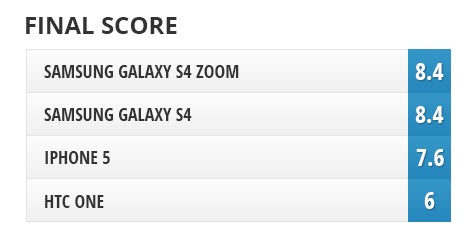
Software versions of the units used in the comparison:
Samsung Galaxy S4 Zoom – Android 4.2.2, Build Number: JDQ39.C101XXUAMFB
Samsung Galaxy S4 – Android 4.2.2, Build Number: JDQ39.I9505XXUBMEA
HTC One – Android 4.1.2, Software Number: 1.29.401.12
iPhone 5 – iOS 7 Beta 1

You can now read:
- LG G2 vs Samsung Galaxy S4 vs iPhone 5 vs HTC One Camera comparison
- iPhone 5s vs LG G2 vs Samsung Galaxy Note 3 vs Galaxy S4 vs HTC One vs Motorola Moto X vs DROID Ultra Camera comparison
- Google Nexus 5 vs iPhone 5s vs Sony Xperia Z1 vs Samsung Galaxy Note 3 vs Galaxy S4 vs LG G2 vs Nokia Lumia 1020 vs HTC One Camera comparison
Follow us on Google News

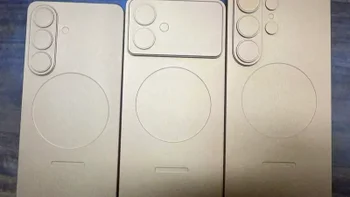
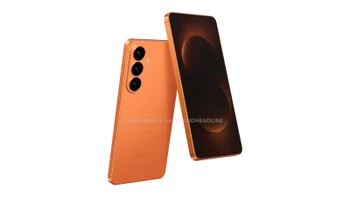









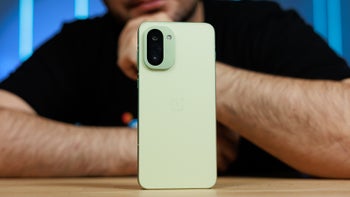
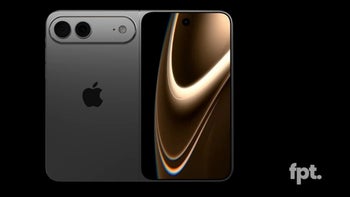
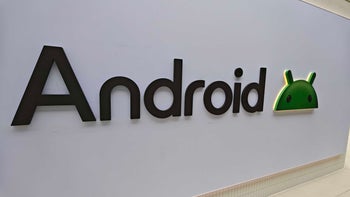
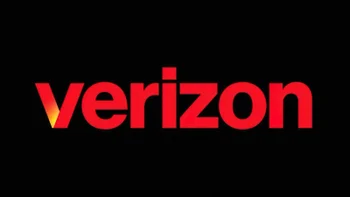

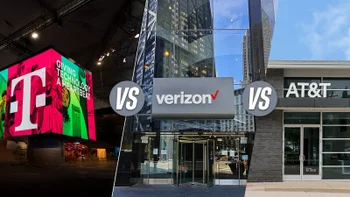
Things that are NOT allowed:
To help keep our community safe and free from spam, we apply temporary limits to newly created accounts: